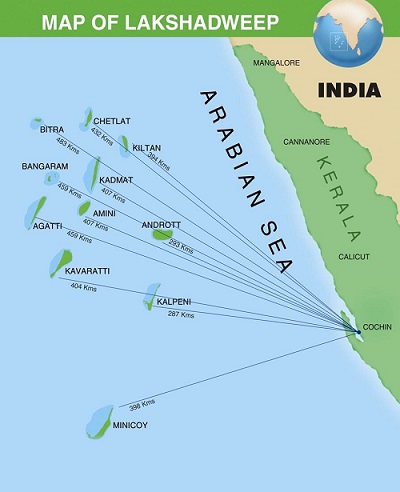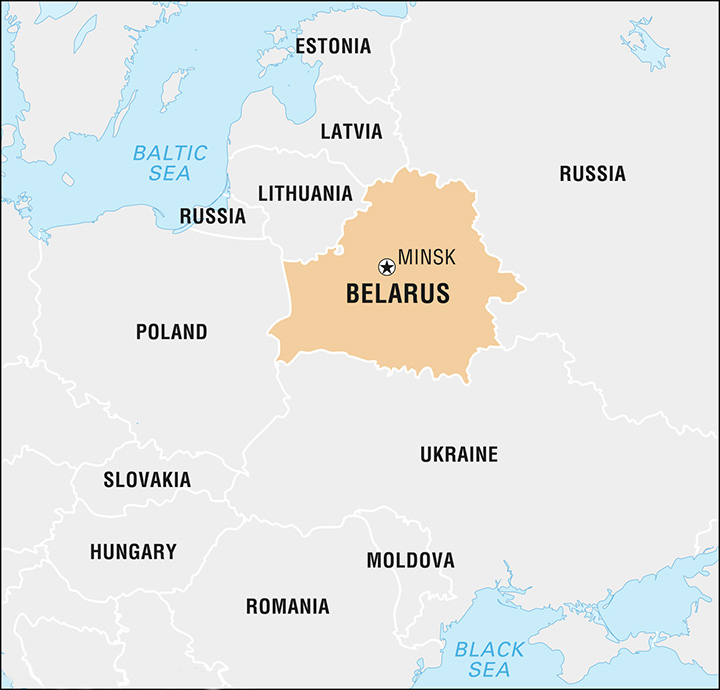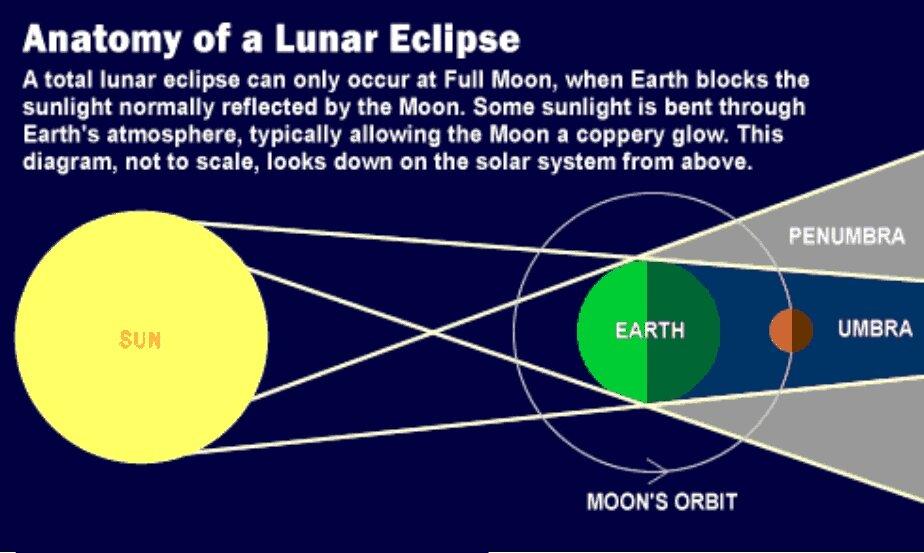Governance
Defining Hate Speech
Why in News
As there is no clear definition of what constitutes a “Hate Speech” in the Indian Penal Code (IPC), the Committee for Reforms in Criminal Laws constituted by the Union Home Ministry to suggest reforms to the British-era IPC, is attempting for the first time to define such speech.
Key Points
- Hate Speech:
- In general, it refers to words whose intent is to create hatred towards a particular group, that group may be a community, religion or race.This speech may or may not have meaning, but is likely to result in violence.
- The Bureau of Police Research and Development recently published a manual for investigating agencies on cyber harassment cases that defined hate speech as a language that denigrates, insults, threatens or targets an individual based on their identity and other traits (such as sexual orientation or disability or religion etc.).
- In the 267th Report of the Law Commission of India, hate speech is stated as an incitement to hatred primarily against a group of persons defined in terms of race, ethnicity, gender, sexual orientation, religious belief and the like.
- In order to determine whether a particular instance of speech is a hate speech or not, the context of the speech plays an important role.
- Major Reasons of Hate Speech:
- Individuals believe in stereotypes that are ingrained in their minds and these stereotypes lead them to believe that a class or group of persons are inferior to them and as such cannot have the same rights as them.
- The stubbornness to stick to a particular ideology without caring for the right to co-exist peacefully adds further fuel to the fire of hate speech.
- Indian Penal Provisions Related to Hate Speech:
- Under Indian Penal Code:
- Sections 153A and 153B of the IPC: Punishes acts that cause enmity and hatred between two groups.
- Section 295A of the IPC: Deals with punishing acts which deliberately or with malicious intention outrage the religious feelings of a class of persons.
- Sections 505(1) and 505(2): Make the publication and circulation of content which may cause ill-will or hatred between different groups an offence.
- Under Representation of People’s Act:
- Section 8 of the Representation of People’s Act, 1951 (RPA): Prevents a person convicted of the illegal use of the freedom of speech from contesting an election.
- Sections 123(3A) and 125 of the RPA: Bars the promotion of animosity on the grounds of race, religion, community, caste, or language in reference to elections and include it under corrupt electoral practices.
- Under Indian Penal Code:
- Suggestion for Changes in IPC:
- Viswanathan Committee 2019:
- It proposed inserting Sections 153 C (b) and Section 505 A in the IPC for incitement to commit an offence on grounds of religion, race, caste or community, sex, gender identity, sexual orientation, place of birth, residence, language, disability or tribe.
- It proposed punishment of up to two years along with Rs. 5,000 fine.
- Bezbaruah Committee 2014:
- It proposed amendment to Section 153 C IPC (promoting or attempting to promote acts prejudicial to human dignity), punishable by five years and fine or both and Section 509 A IPC (word, gesture or act intended to insult member of a particular race), punishable by three years or fine or both.
- Viswanathan Committee 2019:
Way Forward
- For a country like India with a massive population of diverse backgrounds and culture, subjects like hate speech become a complex issue to deal with as it is difficult to differentiate between free and hate speech.
- Several factors are to be considered while restraining speeches like the number of strong opinions, offensive to certain communities, the effect on the values of dignity, liberty, and equality. Certainly, there are laws for such atrocities but a major part of work is still left.
- Therefore giving a proper definition to hate speech would be the first step to deal with the menace and other initiatives such as spreading awareness amongst the public is the need of the hour.
Indian Polity
Appointment of CBI Director
Why in News
Recently, the Central Government has appointed ‘Subodh Kumar Jaiswal’ as a new Director of the Central Bureau of Investigation (CBI).
- The Director of the CBI is appointed as per section 4A of the Delhi Special Police Establishment Act of 1946.
Key Points
- About the Central Bureau of Investigation (CBI):
- The CBI was set up in 1963 by a resolution of the Ministry of Home Affairs.
- Now, the CBI comes under the administrative control of the Department of Personnel and Training (DoPT) of the Ministry of Personnel, Public Grievances and Pensions.
- The establishment of the CBI was recommended by the Santhanam Committee on Prevention of Corruption (1962–1964).
- The CBI is not a statutory body. It derives its powers from the Delhi Special Police Establishment Act, 1946.
- The CBI is the main investigating agency of the Central Government.
- It also provides assistance to the Central Vigilance Commission and Lokpal.
- It is also the nodal police agency in India which coordinates investigations on behalf of Interpol Member countries.
- The CBI is headed by a Director.
- The CBI has jurisdiction to investigate offences pertaining to 69 Central laws, 18 State Acts and 231 offences in the IPC.
- The CBI was set up in 1963 by a resolution of the Ministry of Home Affairs.
- Appointment of CBI Director:
- The Director of CBI as Inspector General of Police, Delhi Special Police Establishment, is responsible for the administration of the organisation.
- The Lokpal and Lokayuktas Act (2013) amended the Delhi Special Police Establishment Act (1946) and made the following changes with respect to appointment of the Director of CBI:
- Appointment Committee: The Central Government shall appoint the Director of CBI on the recommendation of a three-member committee consisting of the Prime Minister as Chairperson, the Leader of Opposition in the Lok Sabha and the Chief Justice of India or Judge of the Supreme Court (SC) nominated by him.
- The Delhi Special Police Establishment (Amendment) Act, 2014 made a change in the composition of the committee related to the appointment of the Director of CBI.
- It states that where there is no recognized leader of opposition in the Lok Sabha, then the leader of the single largest opposition party in the Lok Sabha would be a member of that committee.
- Tenure of Director: The Director of CBI has been provided security of two-year tenure in office by the CVC Act, 2003.
- SC Rulings Related to CBI Director:
- The six-month minimum residual tenure rule was introduced by the Supreme Court in a March 2019 order.
- No officer with less than six months' tenure remaining can be considered for the post of chief.
- Though the order in the Prakash Singh case pertained to the appointment of DGPs, it was extended to CBI Director too.
- In the Prakash Singh case, 2006 the SC had stressed the point that appointment of DGPs “should be purely on the basis of merit and to insulate the office from all kinds of influences and pressures”.
- The Director of CBI is to hold the post for not less than two years as held by the Vineet Narain judgment of 1998.
- He/she may not be transferred except with the previous consent of the high-level committee.
- The SC in Union of India versus C. Dinakar, 2001 case has held that “ordinarily IPS officers of the senior most four batches in service on the date of retirement of CBI Director, irrespective of their empanelment, shall be eligible for consideration for appointment to the post of CBI Director”.
- The six-month minimum residual tenure rule was introduced by the Supreme Court in a March 2019 order.
Governance
Draft Lakshadweep Development Authority Regulation, 2021
Why in News
The latest Draft Lakshadweep Development Authority Regulation, 2021, for the creation of a Lakshadweep Development Authority (LDA) is widely resented by the people of Lakshadweep.
Key Points
- About:
- Constitution of Lakshadweep Development Authority:
- It empowers the government, identified as the administrator, to constitute Planning and Development Authorities under it to plan the development of any area identified as having “bad layout or obsolete development”.
- The authority would be a body corporate with a government-appointed chairman, a town planning officer and three ‘expert’ government nominees besides two local authority representatives.
- These authorities are to prepare land use maps, carry out zonation for type of land use and indicate areas for proposed national highways, arterial roads, ring roads, major streets, railways, tramways, airports, theatres, museums etc.
- Only cantonment areas are exempted from this.
- It empowers the government, identified as the administrator, to constitute Planning and Development Authorities under it to plan the development of any area identified as having “bad layout or obsolete development”.
- Defines ‘Development’:
- It defines development as the carrying out of building, engineering, mining, quarrying or other operations in, on, over or under land, the cutting of a hill or any portion thereof or the making of any material change in any building or land or in the use of any building or land.
- Fees for Changing Zones:
- It stipulates that islanders must pay a processing fee for zone changes.
- It implies that localities would be required to pay fees to gain approval to alter zones as per the development plan, as well as fees for permission to develop their own land.
- Penalties:
- It establishes penalties such as imprisonment for obstructing the development plan's work or workers.
- Constitution of Lakshadweep Development Authority:
- People’s Concern:
- Real Estate Interests:
- People suspect that this might have been issued at the behest of ‘real estate interests’ seeking to usurp the small holdings of property owned by the islanders, a majority of them (94.8% as per the 2011 census) belonging to the Scheduled Tribes (ST).
- Proposals to bring real estate development concepts such as ‘transferable development rights’ to the island have raised people's fear of forced migration en masse.
- Forcible Relocation & Eviction:
- It vests such powers with the authority that it can prepare comprehensive development plans for any area and relocate people regardless of their will.
- It provides for forcible eviction, puts the onus on the owner to develop his holding as per the plan prepared by the authority as also to heavily penalise them in the event of non-compliance.
- Destruction of Culture:
- The island community is a close-knit group with families living in close proximity. The regulation will destroy the way of life practised by them for generations.
- Ecological Concerns:
- It is neither ecologically sustainable nor socially viable and the people’s representatives were not consulted before drafting it.
- Real Estate Interests:
Lakshadweep
- About:
- India’s smallest Union Territory, Lakshadweep is an archipelago consisting of 36 islands with an area of 32 sq km.
- It is directly under the control of the Centre through an administrator.
- There are three main group of islands:
- Amindivi Islands
- Laccadive Islands
- Minicoy Island.
- Amindivi Islands are the northernmost while Minicoy island is the southernmost.
- All are tiny islands of coral origin (Atoll) and are surrounded by fringing reefs.
- The Capital is Kavaratti and it is also the principal town of the UT.
- Pitti island, which is uninhabited, has a bird sanctuary.
- Population:
- More than 93% of the population who are indigenous, are Muslims and majority of them belong to the Shafi School of the Sunni Sect.
- Malayalam is spoken in all the islands except Minicoy where people speak Mahl which is written in Divehi script and is spoken in Maldives also.
- The entire indigenous population has been classified as Scheduled Tribes because of their economic and social backwardness. There are no Scheduled Castes in this Union Territory.
- The main occupation of the people is fishing, coconut cultivation and coir twisting. Tourism is an emerging industry.
- Organic Agricultural Area: Recently, the entire Lakshadweep group of islands has been declared as an organic agricultural area under the Participatory Guarantee System (PGS) of India.
Governance
One Stop Centres
Why in News
The Ministry of Women and Child Development will set up One Stop Centres (OSCs) across 10 countries to provide assistance to Indian women who are survivors of gender-based violence.
- The missions where the OSCs will come up are Bahrain, Kuwait, Qatar, Oman, UAE, Jeddah and Riyadh in Saudi Arabia, Australia, Canada and Singapore.
- It will also set up 300 OSCs in the country in addition to the nearly 700 existing ones across all districts.
Key Points
- About:
- It is a centrally sponsored scheme for addressing the problem of violence against women. It was launched in April 2015.
- It is a subscheme of the umbrella scheme for National Mission for Empowerment of Women including Indira Gandhi Mattritav Sahyaog Yojana.
- One stop centre will be established across the country and at least one OSC in every mission around the world to provide integrated support and assistance under one roof to women affected by violence.
- Indian missions represent an important form of contact between the Indians around the world and the government of India.
- Objectives:
- To support women affected by the violence that they may face within the family or at the workplace or within the community, in private or public places.
- Specially for women who face sexual, physical, psychological, emotional and economic abuse, irrespective of their caste, creed, race, class, education status, age, culture, or marital status.
- To support women affected by the violence that they may face within the family or at the workplace or within the community, in private or public places.
- Funding:
- It is funded through Nirbhaya Fund and the central government provides 100% financial assistance to the state governments /Union Territories administrations.
Nirbhaya Fund
- The Nirbhaya Fund Framework provides for a non-lapsable corpus fund for safety and security of women.
- It was established in 2013.
- It is administered by the Department of Economic Affairs (DEA) of the Ministry of Finance (MoF) of the Government of India.
- It can be utilized for projects and initiatives related to women safety.
- Auditing:
- Audit will be done as per Comptroller & Auditor General of India norms and social audit will also be undertaken by civil society groups.
- Services:
- Emergency response and rescue services.
- Medical assistance.
- Assistance to women in lodging the FIR.
- Psycho-social support and counselling.
- Legal aid and counselling.
- Shelter.
- Video conferencing facility.
- Indian Legislative Framework to Prevent Violence Against Women:
- Some Other Initiatives for Women:
International Relations
EU Imposes Sanctions Against Belarus
Why in News
Recently, the European Union (EU) imposed sanctions against Belarus, including banning its airlines from using the airspace and airports of the 27-nation bloc EU.
Key Points
- Background of Belarus’ Polity:
- Europe's longest-serving ruler, President of Belarus Lukashenko took office in 1994 amid the chaos caused by the collapse of the Soviet Union in 1991.
- Often described as Europe's "last dictator", he has tried to preserve elements of Soviet communism.
- He has been in power for 26 years, keeping much of the economy in state hands, and using censorship and police crackdowns against opponents.
- In 2020, after Lukashenko was announced as the winner in elections, protests broke out in the capital, Minsk which was met with a violent security crackdown.
- There has been widespread anger against the government over a stagnant economy and doubts about the fairness of the election.
- Previous Sanctions:
- In response to the violent crackdown, the EU and the United States (US) imposed several rounds of financial sanctions against Belarus in 2020.
- The US also imposed travel restrictions and targeted financial sanctions on nine state-owned entities and 16 individuals, including President Lukashenko. First imposed in 2006, these were tightened in 2008.
- The EU first introduced restrictive measures against Belarus in 2004, following the disappearance of two opposition politicians, a journalist and a businessman several years earlier.
- Reason for Recent Sanctions:
- Belarus forcely diverted a passenger jet and scrambled a warplane to arrest an opposition journalist in an act denounced by Western powers as “state piracy” (an act of piracy where the state is involved).
- Steps Taken by EU:
- Restrictions on Airspace:
- Called for Belarusian airlines to be banned from the 27-nation bloc’s airspace and urged EU-based carriers to avoid flying over the former Soviet republic.
- Investigation into Forced Plane Diversion:
- Agreed to widen the list of Belarusian individuals they already sanction and called on the International Civil Aviation Organization (ICAO) to urgently investigate Belarus forcing a Ryanair plane to land in Minsk on a Greece-Lithuania flight.
- It also called for the release of the journalist who was detained.
- Sanctions on Individuals and Businesses:
- Since October 2020, the EU has progressively been restricting more and more key political figures with measures like travel bans and asset freezes.
- With the recent incident, the bloc decided to add even more targets to its sanction list of 88 individuals and seven entities.
- Billion-Euro Economic Package:
- The EU had a 3 billion Euro investment package ready for Belarus that it will now freeze until the country turns democratic.
- Restrictions on Airspace:
- Implications:
- Belarus lies on the flight path of routes within Europe and between Europe and Asia. Skirting Belarus would slow flights down and cost airlines money.
- Belarus receives income from airlines that enter its airspace of up to 70,000 Euro each day, losing this amount of money would be an inconvenience but not have a significant impact on the economy of Belarus.
International Civil Aviation Organisation
- About:
- It is a United Nations (UN) specialized agency, established in 1944, which laid the foundation for the standards and procedures for peaceful global air navigation.
- The Convention on International Civil Aviation was signed in December 1944 in Chicago.
- It established the core principles permitting international transport by air, and also led to the creation of the ICAO.
- It is a United Nations (UN) specialized agency, established in 1944, which laid the foundation for the standards and procedures for peaceful global air navigation.
- Objective:
- To foster the planning and development of international air transport so as to ensure the safe and orderly growth of international civil aviation throughout the world.
- Members:
- India is among its 193 members.
- Headquarter:
- Montreal, Canada.
Way Forward
- The President of Belarus should ensure the formation of a legitimate government that could address the country’s vital problems.
- He has to reach out to the Opposition and offer talks to find a peaceful settlement to the crisis.
Indian Heritage & Culture
Vesak Celebration
Why in News
The Prime Minister addressed “Virtual Vesak Global Celebrations” on Buddha Purnima.
- The event is being organised by the Ministry of Culture in collaboration with the International Buddhist Confederation (IBC) and will witness the participation of all the supreme heads of the Buddhist Sanghas from around the world.
Key Points
- Buddha Purnima:
- It is celebrated to mark the birth of Gautam Buddha, the founder of Buddhism.
- It is also known as Vesak. In 1999, it became a UN-designated day, to acknowledge the contribution of Buddhism to society.
- It is considered a 'triple-blessed day' - as Tathagata Gautam Buddha's birth, enlightenment, and Maha Parnirvana.
- Buddha Purnima falls on a full moon night, usually between April and May, and it is a gazetted holiday in India.
- Many devotees visit Mahabodhi Temple, a UNESCO World Heritage Site, located in Bodh Gaya, Bihar, on this occasion.
- Bodhi Temple is the location where Lord Buddha is said to have attained enlightenment.
- It is celebrated to mark the birth of Gautam Buddha, the founder of Buddhism.
- International Buddhist Confederation (IBC):
- IBC is the biggest religious Buddhist confederation.
- The purpose of this body is to create a role for Buddhism on the global stage so as to help to preserve heritage, share knowledge, and promote values and to represent a united front for Buddhism to enjoy meaningful participation in the global discourse.
- In November 2011, New Delhi was host to Global Buddhist Congregation (GBC), where the attendees unanimously adopted a resolution to form an international umbrella body – the International Buddhist Confederation (IBC).
- HQ: Delhi, India.
- About Gautam Buddha:
- He was born as Siddhartha Gautama in circa 563 BCE, in Lumbini and belonged to the Sakya clan.
- Gautam attained Bodhi (enlightenment) under a pipal tree at Bodhgaya, Bihar.
- Buddha gave his first sermon in the village of Sarnath, near Varanasi in Uttar Pradesh. This event is known as Dharma Chakra Pravartana (turning of the wheel of law).
- He died at the age of 80 in 483 BCE at Kushinagara, Uttar Pradesh. The event is known as Mahaparinibban or Mahaparinirvana.
- He is believed to be the eighth of the ten incarnations of Lord Vishnu (Dashavatar).
Buddhism
- About:
- Buddhism started in India over 2,600 years ago.
- The main teachings of Buddhism are encapsulated in the basic concept of four noble truths or ariya-sachchani and eight-fold path or ashtangika marg.
- Dukkha (Sufferings) and its extinction are central to the Buddha’s doctrine.
- The essence of Buddhism is the attainment of enlightenment or nirvana which was not a place but an experience and could be attained in this life.
- There is no supreme god or deity in Buddhism.
- Buddhist Councils:
- Schools of Buddhism:
- Mahayana (Idol Worship), Hinayana, Theravada, Vajrayana (Tantric buddhism), Zen.
- Buddhism Texts (Tipitaka):
- Vinaya Pitaka (rules applicable to monastic life), Sutta Pitaka (main teaching or Dhamma of Buddha), Abhidhamma Pitaka (a philosophical analysis and systematization of the teaching).
- Contribution of Buddhism to Indian Culture:
- The concept of ahimsa was its chief contribution. Later, it became one of the cherished values of our nation.
- Its contribution to the art and architecture of India was notable. The stupas at Sanchi, Bharhut, and Gaya are wonderful pieces of architecture.
- It promoted education through residential universities like those at Taxila, Nalanda, and Vikramasila.
- The language of Pali and other local languages developed through the teachings of Buddhism.
- It had also promoted the spread of Indian culture to other parts of Asia.
- UNESCO’s Heritage Sites Related to Buddhism:
- Archaeological Site of Nalanda Mahavihara at Nalanda, Bihar
- Buddhist Monuments at Sanchi, MP
- Mahabodhi Temple Complex at Bodh Gaya, Bihar
- Ajanta Caves Aurangabad, Maharashtra.
Geography
Total Lunar Eclipse and Supermoon
Why in News
Two celestial events - Total Lunar Eclipse and Supermoon - together coincide on 26th May 2021.
Key Points
- Supermoon:
- A supermoon occurs when the Moon’s orbit is closest to the Earth at the same time that the Moon is full.
- As the Moon orbits the Earth, there is a point of time when the distance between the two is the least (called the perigee) and a point of time when the distance is the most (called the apogee).
- Since a full Moon appears at the point of least distance from earth, not only does it appear to be brighter but it is also larger than a regular full moon.
- According to NASA, the term supermoon was coined by astrologer Richard Nolle in 1979. In a typical year, there may be two to four full supermoons and two to four new supermoons in a row.
- A supermoon occurs when the Moon’s orbit is closest to the Earth at the same time that the Moon is full.
- Lunar Eclipse:
- About:
- Lunar eclipse takes place when the Moon moves into the Earth’s shadow. The Earth has to be directly between the Sun and the Moon, and a lunar eclipse can only take place during a full Moon.
- First, the Moon moves into the penumbra – the part of the Earth’s shadow where not all of the light from the Sun is blocked out. Part of the Moon’s disc will look dimmer than a regular full Moon.
- And then the Moon moves into the Earth’s umbra, where direct light from the Sun is totally blocked out by the Earth. This means the only light reflecting off the Moon’s disc has already been refracted, or bent, by the Earth’s atmosphere.
- Total Lunar Eclipse:
- During this, the whole of the lunar disc enters the Earth’s umbra, so the Moon appears reddish (Blood Moon). This won’t last forever, though.
- After about 14 minutes, the Moon will move out of Earth’s umbra and back into its penumbra. In total, the lunar eclipse will last a few hours.
- Red light has a longer wavelength than blue light, which gives the lunar eclipse its characteristic reddish colour.
- On Earth, we see the same effect during sunrises and sunsets, when the sky has a more reddish glow than during the day.
- About:
Total Solar Eclipse
- Total solar eclipses occur when the New Moon comes between the Sun and Earth and casts the darkest part of its shadow, the umbra, on Earth. A full solar eclipse, known as totality, is almost as dark as night.
- During a total eclipse of the Sun, the Moon covers the entire disk of the Sun. In partial and annular solar eclipses, the Moon blocks only part of the Sun.
- When the Moon completely covers the disk of the Sun, only the Sun's corona is visible.
- It is called Total eclipse because at the maximum point of the eclipse (midpoint of time of totality), the sky goes dark and temperatures can fall.
Important Facts For Prelims
WHO BioHub Initiative
Why in News
The World Health Organization (WHO) and Switzerland have launched a BioHub facility that will allow pathogens sharing between laboratories and facilitate “analysis and preparedness” against them.
Key Points
- About BioHub Facility:
- The facility will help in safe reception, sequencing, storage and preparation of biological materials for distribution to other laboratories, so as to facilitate global preparedness against these pathogens.
- It will enable member states to share biological materials with and via the BioHub under pre-agreed conditions, including biosafety, biosecurity, and other applicable regulations.
- In parallel, WHO will broaden its BioHub System for the use of biological materials by qualified entities – such as manufacturers – for the development of medical by-products for fair allocation to countries.
- Significance:
- The Covid-19 pandemic and other outbreaks and epidemics have underscored the importance of rapidly sharing pathogens to help the global scientific community assess the risk and develop countermeasures such as diagnostics, therapeutics and vaccines.
- Pathogens have been shared bilaterally between countries: A process that can be sluggish and deny the benefits to some.
- This will ensure the timely sharing of epidemiological and clinical data as well as biological materials.
- The move will help contribute to the establishment of an international exchange system for novel coronavirus SARS-CoV-2 and other emerging pathogens.
- The Covid-19 pandemic and other outbreaks and epidemics have underscored the importance of rapidly sharing pathogens to help the global scientific community assess the risk and develop countermeasures such as diagnostics, therapeutics and vaccines.
Pathogens
- Definition:
- A pathogen is a biological agent that causes disease or illness. Zoonotic pathogen refers to pathogens naturally transmitted between animals and humans.
- Types of Pathogens:
- Virus:
- Viruses are made up of a piece of genetic code, such as DNA or RNA, and protected by a coating of protein. Viruses invade host cells within the body. They then use the components of the host cell to replicate, producing more viruses.
- Examples of diseases caused by viruses: Chickenpox, Flu (influenza), Covid-19, Human immunodeficiency virus (HIV/AIDS), Mumps, measles and rubella.
- Bacteria:
- Bacteria are microorganisms made of a single cell. They are very diverse, have a variety of shapes and features, and have the ability to live in just about any environment, including in and on the body.
- Examples of diseases caused by bacteria: Cholera, Leprosy, Tuberculosis, Plague, Syphilis, Anthrax etc.
- Fungi:
- Fungi can be found just about everywhere in the environment, including indoors, outdoors, and on human skin. They cause infection when they overgrow.
- Examples of Fungal Infection: Mucormycosis, White Fungus, Yellow Fungus.
- Parasites:
- Parasites are organisms that behave like tiny animals, living in or on a host and feeding from or at the expense of the host. Though parasitic infections are more common in tropical and subtropical regions, they can occur anywhere.
- Diseases caused by Parasite: Malaria, African trypanosomiasis, babesiosis, leishmaniasis, and toxoplasmosis etc.
- Virus:
- Antimicrobial Resistance:
- It is the resistance acquired by any microorganism (bacteria, viruses, fungi, parasite, etc.) against antimicrobial drugs (such as antibiotics, antifungals, antivirals, antimalarials, and anthelmintics) that are used to treat infections.



.png)






